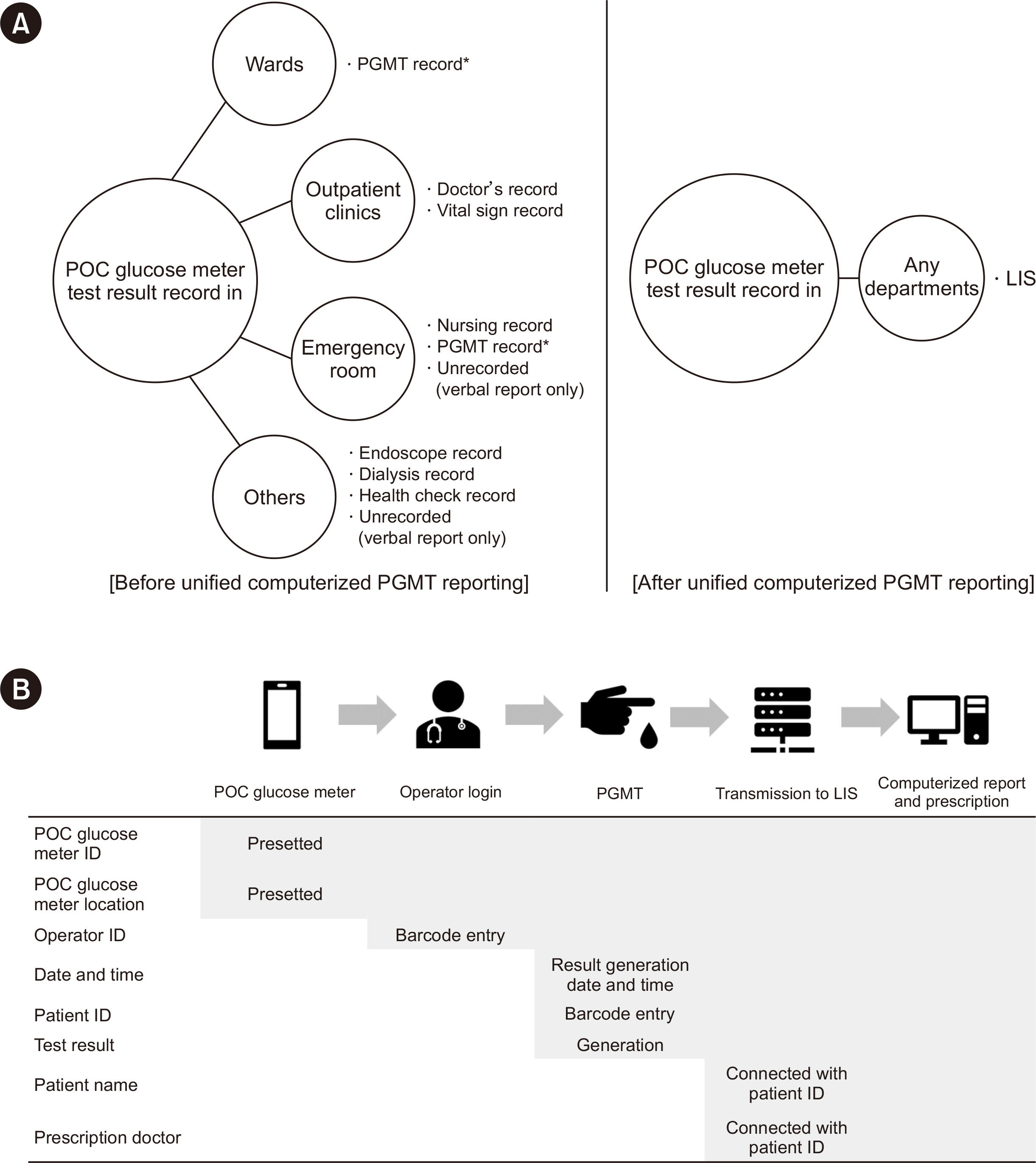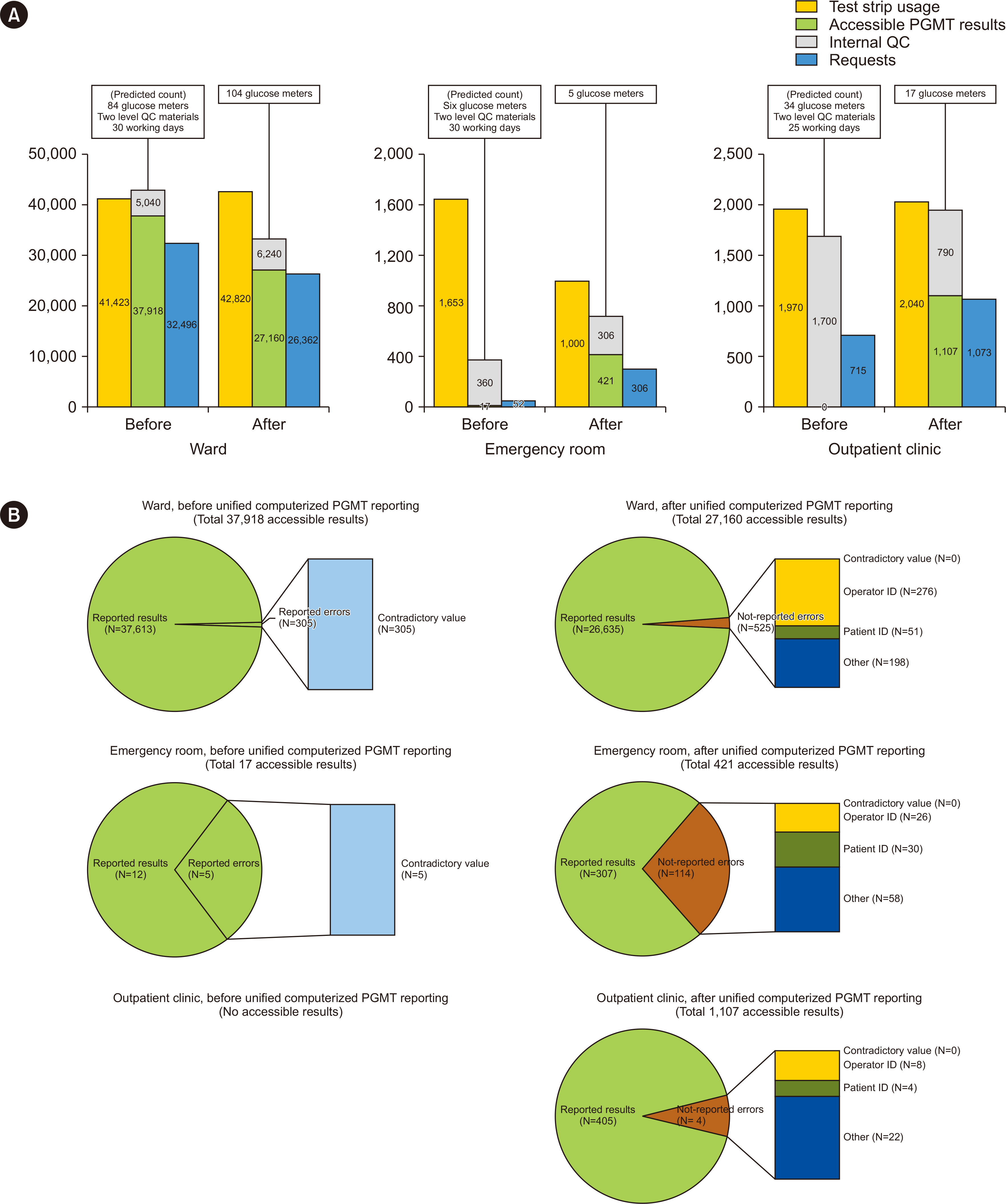Ann Lab Med.
2024 Jan;44(1):103-106. 10.3343/alm.2024.44.1.103.
Effectiveness of Unified Computerized Reporting of Point-of-Care Glucose Meter Test
- Affiliations
-
- 1Department of Laboratory Medicine and Genetics, Soonchunhyang University Bucheon Hospital, Soonchunhyang University College of Medicine, Bucheon, Korea
- 2Soonchunhyang Medical Devices Clinical Research Center, Soonchunhyang University, Asan, Korea
- 3Division of Endocrinology, Department of Internal Medicine, Soonchunhyang University Bucheon Hospital, Soonchunhyang University College of Medicine, Bucheon, Korea
- 4Division of Nephrology, Department of Internal Medicine, Soonchunhyang University Bucheon Hospital, Soonchunhyang University College of Medicine, Bucheon, Korea
- KMID: 2550230
- DOI: http://doi.org/10.3343/alm.2024.44.1.103
Figure
Reference
-
1. Kim S, Cho EJ, Jeong TD, Park HD, Yun YM, Lee K, et al. 2023; Proposed model for evaluating real-world laboratory results for big data research. Ann Lab Med. 43:104–7. DOI: 10.3343/alm.2023.43.1.104. PMID: 36045065. PMCID: PMC9467825.
Article2. Blatter TU, Witte H, Nakas CT, Leichtle AB. 2022; Big data in laboratory medicine-FAIR quality for AI? Diagnostics (Basel). 12:1923. DOI: 10.3390/diagnostics12081923. PMID: 36010273. PMCID: PMC9406962.
Article3. Choi S, Choi SJ, Jeon BR, Lee YW, Oh J, Lee YK. 2021; What we should consider in point of care blood glucose test; current quality management status of a single institution. Medicina (Kaunas). 57:238. DOI: 10.3390/medicina57030238. PMID: 33806620. PMCID: PMC8001912.
Article4. Khan AI, Khan M, Khan R. 2023; Artificial intelligence in point-of-care testing. Ann Lab Med. 43:401–7. DOI: 10.3343/alm.2023.43.5.401. PMID: 37080740. PMCID: PMC10151281.
Article5. Clarke SF, Foster JR. 2012; A history of blood glucose meters and their role in self-monitoring of diabetes mellitus. Br J Biomed Sci. 69:83–93. DOI: 10.1080/09674845.2012.12002443. PMID: 22872934.
Article6. Choi S, Choi SJ, Kim JK, Lee YW, Lee YK. 2023; Real-world evidence of point-of-care glucometers: Enhanced passive surveillance and adverse event reporting status in Korea and the United States. Ann Lab Med. 43:515–9. DOI: 10.3343/alm.2023.43.5.515. PMID: 37080755. PMCID: PMC10151275.
Article7. Barglowski M. 2004; Beyond the glucose meter. Point Care. 3:26–9. DOI: 10.1097/00134384-200403000-00008.
Article8. Mays JA, Mathias PC. 2019; Measuring the rate of manual transcription error in outpatient point-of-care testing. J Am Med Inform Assoc. 26:269–72. DOI: 10.1093/jamia/ocy170. PMID: 30649499. PMCID: PMC6351970.
Article9. Carraro P, Plebani M. 2009; Post-analytical errors with portable glucose meters in the hospital setting. Clin Chim Acta. 404:65–7. DOI: 10.1016/j.cca.2009.03.013. PMID: 19298797.
Article10. Koproski J, Pretto Z, Poretsky L. 1997; Effects of an intervention by a diabetes team in hospitalized patients with diabetes. Diabetes Care. 20:1553–5. DOI: 10.2337/diacare.20.10.1553. PMID: 9314634.
Article
- Full Text Links
- Actions
-
Cited
- CITED
-
- Close
- Share
- Similar articles
-
- Self-Monitoring Blood Glucose Meter: Is Your Glucose Meter Accurate?
- Evaluation of GLUCOCARD X-METER Glucose Monitoring System
- Self-monitoring Glucometers: How Accurate Are They?
- Glucose Management Using Continuous Glucose Monitors
- Evaluation of ACCU-CHEK(R) Inform II Blood Glucose Meter and ACCU-CHEK(R) Performa Strip



